Santa Cruz Juvenile Hall Renovation & Expansion
Five Ways Firms Can Rethink Office Design In A Hybrid World
The world of work is experiencing an extraordinary transformation.
As workplaces across the country, including law firms, adapt to the hybrid world, changes are inevitable. This begs the question: How do you still make long-term real estate decisions, knowing the future is unpredictable?
While there will always be an element of uncertainty about what tomorrow holds, if you take the time to look at the existing data within your organization, overlay that with your firm culture and real estate goals, and incorporate elements that provide your spaces with greater agility, you will be as prepared as you can be to weather any storm.
Here are five key strategies that have helped firms reach their goals while preparing for the unknown.
Flexible Schedules Mean Flexible Spaces
As law firms increasingly embrace flexible work schedules, the tradition of assigning one dedicated seat to each employee becomes harder to justify. In turn, we are witnessing a surge in innovative solutions for individual office space, aimed at supporting equitable workplace cultures while simultaneously reducing the overall real estate footprint.
In this new era of hybrid work, there is no one-size-fits-all approach. There will be different considerations for layout depending on the company’s size and culture, among other characteristics.
Many firms are exploring and experimenting with various layout options to shift their office setups to accommodate hybrid schedules. For example, some offices may incorporate a large percentage of unassigned spaces and employ online reservation systems for employees to log on and select their space for the day.
Other offices may be designed to cater to the employee needs of today, while anticipating changes for organizational growth.
Some firms are implementing private offices and individual workstations that satisfy current employee needs, but in the event more people are hired, they will opt to pivot rather than expand, increasing flexible spaces to accommodate more employees in the office. Examples of these varied workspaces include repurposing areas of the office as flexible working spaces for transient employees, or even assigning two associates to one office.
Many law firms are embracing the hub-and-spoke model to support hybrid work and adapt to the reduction of amenities available in major cities. Within this model, firms maintain a smaller office in a large city center, while also establishing additional office spaces in proximity to their attorney populations, often in more suburban areas.
These strategies showcase the many approaches firms can take to optimize their environments and meet the needs of their workforce.
Celebrating Individuality and Company Culture
In a shift away from comparing themselves to the competition, firms are now prioritizing the support and celebration of their unique culture, clients and employees.
Years ago, many law firms displayed an interest in emulating the perks and amenities offered by their competitors, striving to match or exceed them. Today, these firms are shifting their focus toward their individual employees, carefully assessing their specific needs and tailoring their workplace design accordingly.
Design solutions are being customized to accommodate individual preferences, empowering employee control over factors such as acoustics, temperature, lighting and posture, while still upholding overarching firm standards. This approach ensures that each workspace reflects the distinct identity and needs of the firm while maintaining a harmonious environment.
Incorporating elements such as branded environmental graphics, carefully selected accessories, lighting, rugs and sound settings aims to create a welcoming and comfortable environment reminiscent of home, all while honoring a cohesive aesthetic. In today’s hybrid landscape, it is crucial to empower employees with autonomy and freedom to select spaces that align with their preferences. By offering spaces that allow individualization, law firms can effectively attract and retain in-office employees.
Prioritizing Agility With Employee Attendance
Open and collaborative spaces are rising to accommodate fluctuating in-person employee attendance.
A seat in the workplace is no longer defined as a private office or a workstation. Seats can take shape in huddle rooms, phone rooms, quiet zones, cafes and more as long as it provides a comfortable place to be plugged in. This flexibility allows organizations to accommodate those working days when there’s an influx of people in the office, while still reducing the overall footprint.
Formalized meeting spaces should have the capabilities to evolve into multifunctional areas that can provide large-scale internal and external events. By incorporating movable walls, along with softer elements like rugs, drapery, decorative lighting and background music, these offices can transform into welcoming environments with an inviting atmosphere. Additionally, proximity to employee cafe spaces, coffee stations and outdoor areas should be strategically considered, adding to their convenience and appeal.
These multipurpose spaces should be considered essential for hybrid employees as offices implement change.
For example, when renovating a law firm, three large private offices can easily be converted into one large open space for employees to utilize, with the addition of private phone rooms, a TV with surrounding furniture for virtual meetings, and varied spaces for heads-down independent work.
In this example, a space that once could only accommodate three people can now satisfy 10 or more employees at a time. Spaces like these are incredibly useful for hybrid employees, summer associates, visiting attorneys and retired partners.
Hybrid Amenities Catering to Employee Needs
We’ve discovered that employees generally gravitate toward spaces that draw inspiration from hospitality settings, evoking the ambiance of a tranquil law library or their favorite local coffee shop. The reason for this preference is that they want to be a part of a community while maintaining anonymity.
When adding new spaces to the office, it’s important to keep this in mind while also providing ample access to natural light and scenic views to create a pleasant and stimulating work environment.
Due to the reduction of food options in major city centers over the last few years, firms are looking inward to provide more convenience to their employees.
Examples of this include small-scale pantries or designated areas for serving soups, sandwiches and small plates. Additionally, staffed coffee bars, enhanced self-service options and warmed food lockers are being introduced to accommodate employee needs and adapt to the increase in food delivery services.
Another emerging trend is the rise in concierge services, which encompass a range of convenient offerings such as dry cleaning assistance, room setup and scheduling support. Additionally, wellness rooms are a common request to accommodate activities like stretching, praying or even taking short naps.
By providing these amenities, firms aim to enhance the overall employee experience and prioritize their well-being, creating a holistic and supportive environment.
Technology-Driven Design in Law Firms
Beyond mere so-called Zoom rooms with improved acoustics, lighting and furniture arrangements, the need for in-office technology is critical. Today, it is essential to upgrade spaces to facilitate virtual court appearances, as well as to communicate with peers who are working from home.
These areas must be equipped with one-touch connectivity, ensuring seamless integration with virtual platforms. Careful attention should be given to sound quality, microphones, lighting and green screens to optimize the virtual courtroom experience. Additionally, height-adjustable surfaces and advanced technology can be incorporated to enhance functionality.
For example, mock trial rooms should incorporate cameras and wall-mounted screens, movable furniture and even holograms to provide a more immersive and realistic environment for trial simulations. Within this digital landscape, technology must drive the design of these spaces rather than being added as an afterthought.
In conclusion, as law firms across the country adapt to flexible work, there is an exciting pivot in how offices are designed. It is encouraging to see the shift from wanting to implement what competitors had, to seeking out unique solutions for each firm’s specific employees and culture.
By conducting employee research, surveys and feedback sessions, each organization can have custom-made solutions that work for their team. Whether that be fully unassigned offices, all private offices or a mixture of both, it is important for hybrid law firms to consider individuality, amenities and technology within the space.
YKK AP America
Main & Vine
NELSON Transforms Brand to Align with the Future Of Consumer Experience
NELSON Worldwide today launched a new brand positioning unifying all design, architecture and strategy disciplines under one shared vision that leverages insight and perspective across multiple business sectors to benefit clients with the power of collective expertise.
NELSON has been aggressively expanding with the acquisition of 15 industry-leading firms in the last five years. The new organizational structure will unify a robust network spanning over 25 offices and more than 1,100 employees with a refreshed brand and portfolio strategy, including a new visual and verbal identity to communicate the expansive service offering to the marketplace. This effort will establish centers for excellence with strategic practice verticals that collaboratively work to transform the collective human experience:
“Work”
Experiences centered on our work lives, from corporate office towers to co-working spaces – and even the warehouses that supply us, which count business verticals including Corporate, Tenant/Landlord, Speculative Office, and Industrial, will go to market as NELSON.
“Serve”
The places where communities serve each other in pursuit of education, governance, and healthcare, each with their own unique needs and opportunities will include Healthcare, Government, Education, Justice, and Religious and will go to market as NELSON.
“Play”
The environments where consumers experience brands, in the destinations where we dine, shop, explore, and engage with one another, including Retail, Restaurants, and Entertainment. Recognizing the unique retail strategy, design and architecture equity embodied in the FRCH name, this business will go to market as FRCH NELSON, a NELSON brand.
“Thrive”
The intersection and convergence of many human experiences in one destination, where consumers come together to stay, live, and spend time will include business verticals such as Mixed Use, Hospitality, Commercial Multi-Family, and Senior Living, will go to market was NELSON.
NELSON now touts universal capabilities across all verticals in architecture, interior design, graphic and environmental design, and brand strategy, primed for regional, national, and international applications. This change marks a key turning point in response to consumers’ brand preferences and the future of experiential design in the 21st century.
“This organizational strategy has been twenty years in the making, signaling an exciting era for our company to utilize cross-functional teams, spanning from innovation to implementation services to collaboratively influence the dynamic nature of brand
experiences,” said John “Ozzie” Nelson Jr., Chairman and co-CEO of NELSON.
Today’s consumers engage with brands in a fluid manner, moving in and out of different types of brand experiences. By taking a consumer-centric approach to the impact that NELSON has across the human experience, the company is creating more meaningful and informed solutions for both clients and consumers. With expertise now in all consumer-facing environments, NELSON provides a holistic approach that is unrivaled in the industry.
“Consumers are expecting something much different from brands today than in the past. Through this new organizational strategy, we are saying to current and future clients and the broader market in general, that a very nuanced blending of expertise is needed to build experiences that truly transcend environments, and both inspire and engage consumers,” said Jim Tippmann, Co-CEO of NELSON.
Under this brand repositioning, NELSON will brand its retail-focused practice areas including: specialty retail design, large format, department stores, restaurants, and entertainment, as FRCH NELSON, a cohesive retail center of excellence for Fortune 500 category leaders and boutique clients.
Client partnerships across the NELSON network include: Bank of America, Saks Fifth Avenue, Google, Hershey’s, Cisco, Kroger, Simon Property Group, Macy’s, Westfield, SAP Fieldglass, Hilton Worldwide, Target, T-Mobile, Dick’s Sporting Goods, American Girl, YUM! Brands, and many more.
“The Big Chicken” Takes Flight
Kentucky Fried Chicken has been one of our clients for more than 10 years. We have worked on projects and brand initiatives large and small, but no single project has the scale and literal visibility as the “The Big Chicken” – which boasts an iconic 56-foot-tall chicken sculpture as its main architectural expression. Situated in the heart of Marietta, Georgia, this roadside beacon has been a landmark since construction started in 1956 and a flagship KFC destination since 1966. Still used as a guide to help direct pilots, The Big Chicken has captivated locals and passersby on their way to and from family vacations – forever etched in the hearts and minds of any and all that stop in for a bucket of chicken.
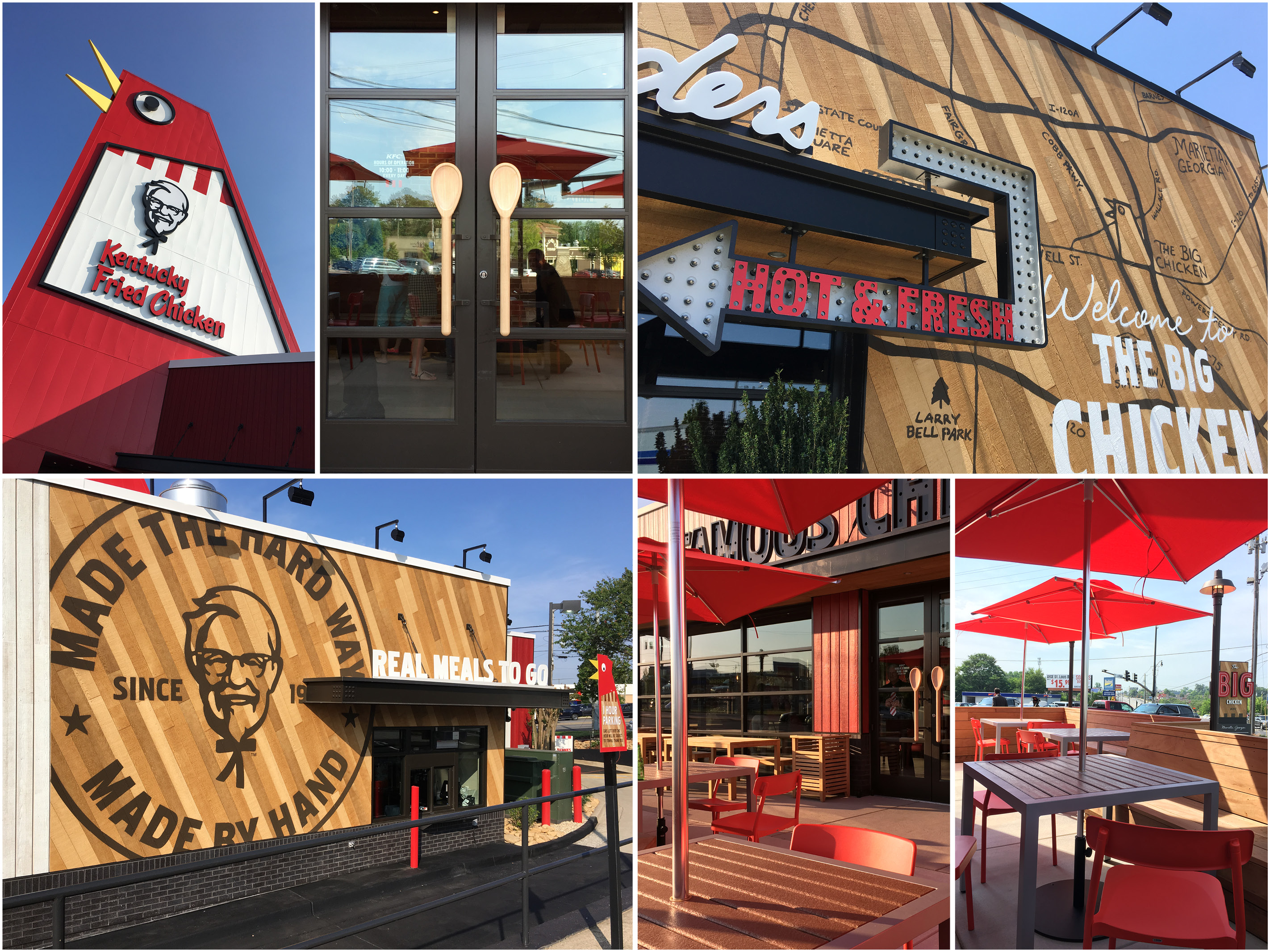
When the opportunity was presented to develop a renovated KFC prototype around the existing marvel, the project quickly became a dream come true for our design team. The icon already did a portion of the heavy lifting, but we needed to dial up the rest of the guest (and employee) experience to be worthy of The Big Chicken. Starting with the foundation of what we helped establish with the American Showman prototype, the site offered us an ideal scenario to riff off the momentum of the brands current advertising campaign and dial up their irreverent, tongue-in-cheek feistiness for their built experience.
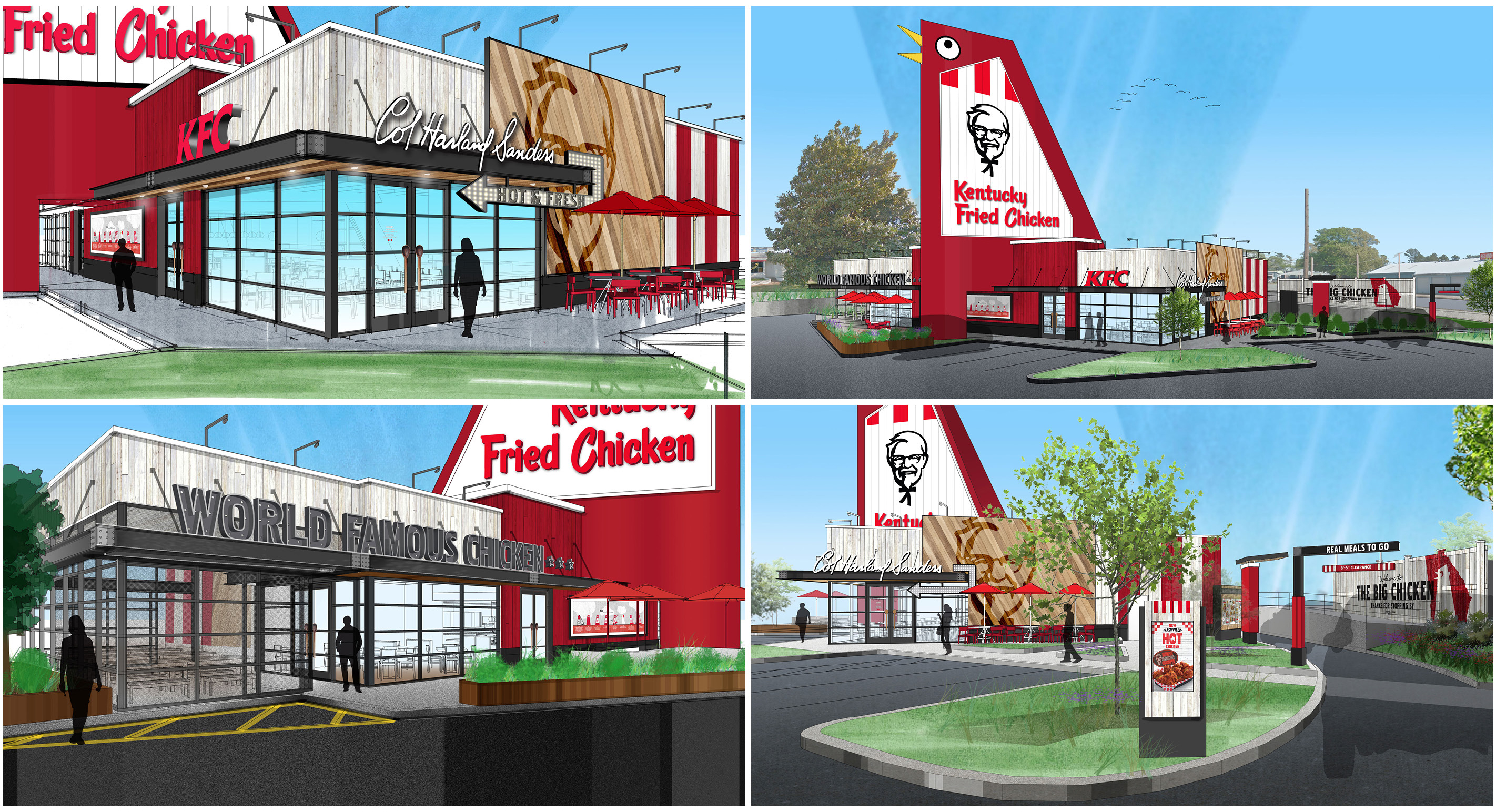
We conceptualized ideas on how Colonel Sanders himself would have approached this opportunity. We started by unifying the site with big, bold architectural and graphic expressions that utilize real wood and hand painted finishes. The team looked for ways to guide and direct guests on a purposeful journey with embedded moments of honest-to-goodness hospitality. We considered opportunities to honor the iconic Big Chicken throughout the dining experience in space planning, brand communication and even a small retail display. Photo-ops help set the stage for social media shares and extend the flagship KFC experience beyond the walls of the restaurant. And lastly, since this particular site is core to the identity of the local neighborhood, we embedded touchpoints that honor and celebrate Marietta, GA and provide locals with a home away from home.
The Colonel himself would have had it no other way!
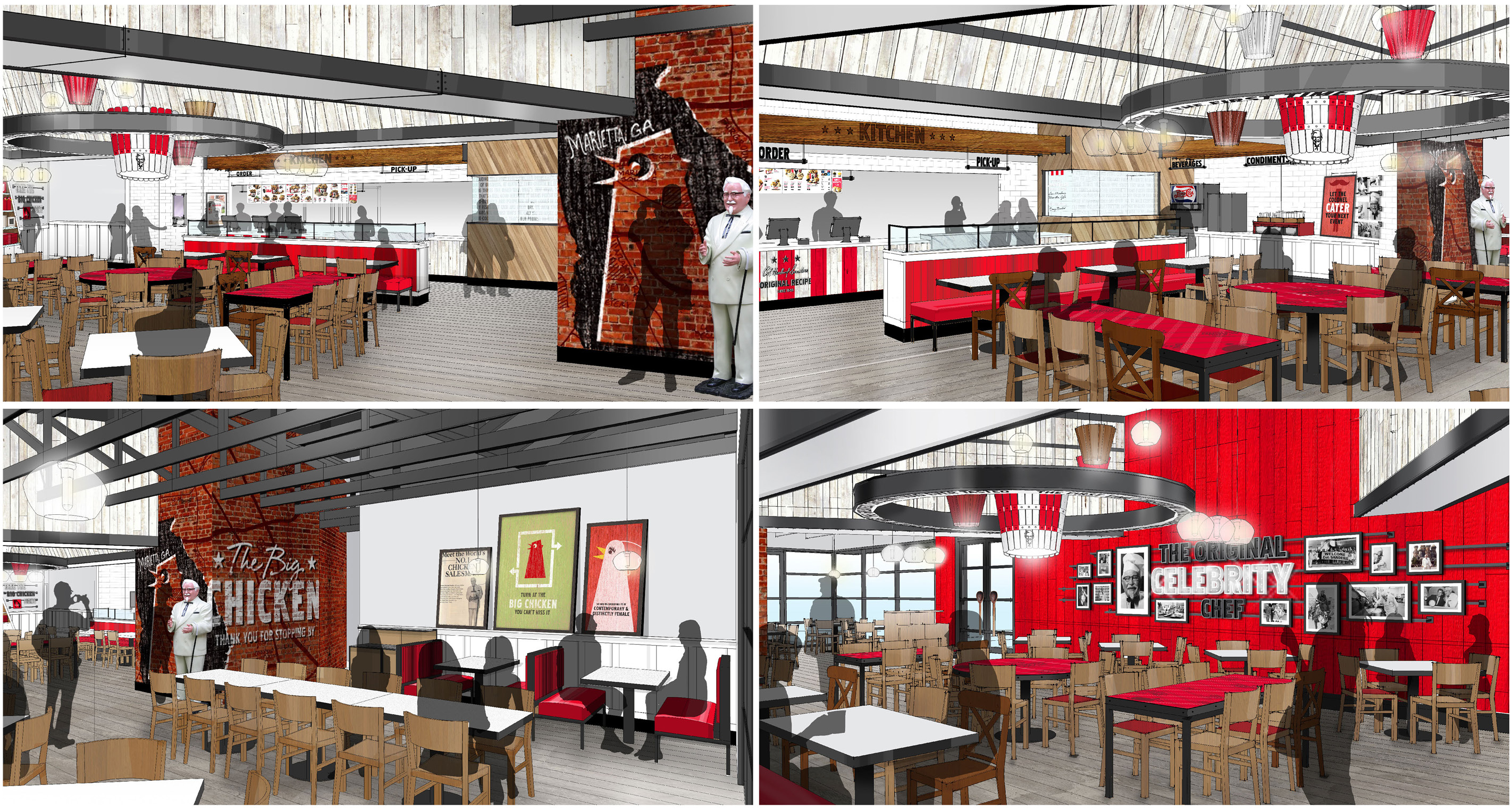
Here are a handful of photos that capture the Grand Opening celebration and ribbon cutting as well as some of our first snaps of the restaurant.
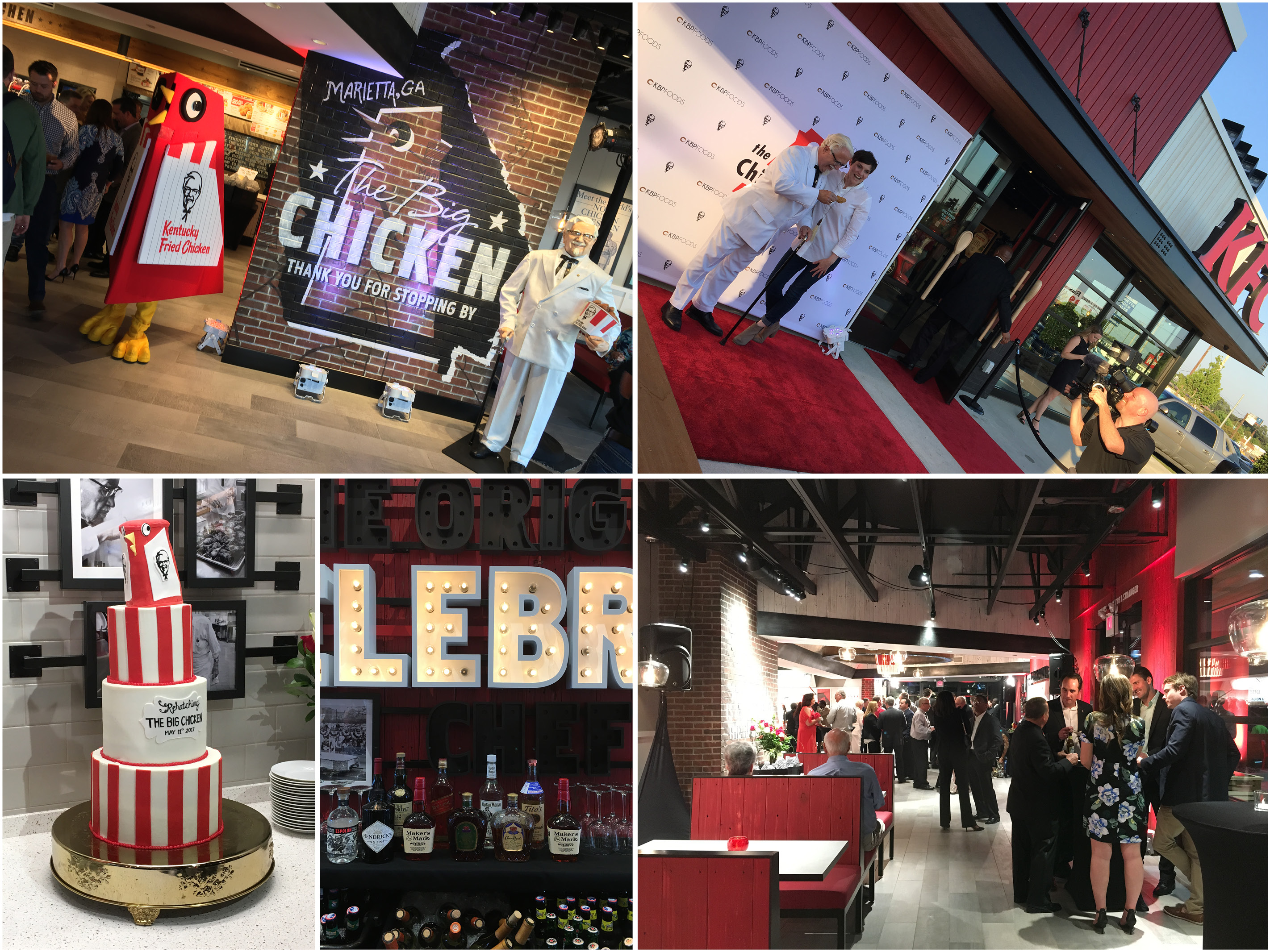
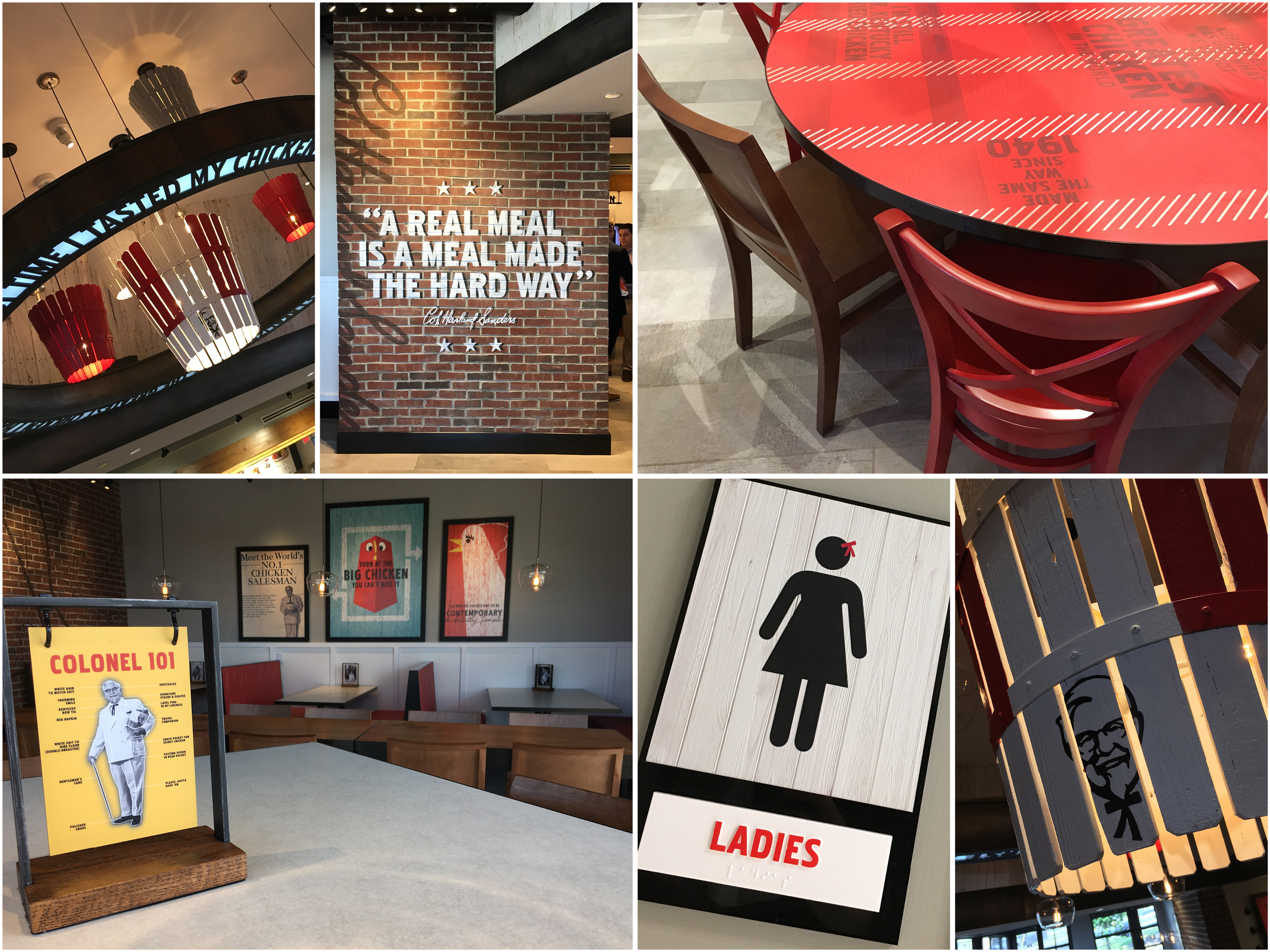
Square One Distribution Center
Target Beauty
Architecture Spotlight: Jim Harkin
At NELSON, we believe architecture has the power to create a transformative sense of place, supporting communities and strengthening the fabric of cities across the nation and around the world. Recently named the #2 fastest growing architecture firm, we’re celebrating our growth, people, and projects that are boldly transforming architecture. To do so, we’ve created our latest series, “Architecture Spotlight” to introduce you to a few thought leaders within the NELSON Architecture Team. You’ll not only get an exclusive look at our people, but hear what’s in store for the future.
This week we interview Jim Harkin, AIA, NCARB, SVP Principal at NELSON. Keep reading to learn more about his career, point-of-view, and what he think is next for the industry.
Q: What is your role at NELSON and how long have you been an architect?
A: I am the National Practice leader for Mixed-Use Co-lead of the Architecture Discipline and member of the NELSON Management Team. I have been an architect for 32 years.
Q: What is your favorite architecture trend of today?
A: The trend of “discovery” is my favorite. I don’t believe that we are in an era or style of Architecture, as in the past. We are in a time of technology, evolution, and pushing the limits of our current construction technology, all while discovering new ways.
Q: What advice would you give a young architect?
A: Be well-rounded, be uncomfortable, be humble, and follow through with any and all opportunities presented to you.
Q: What do you think the future holds for architecture?
A: I think the future is bright, but we must redefine Architecture as a profession. We are clinging to old ideals and need to catch up to the tools, ideas, and world that are available to us.
Q: What is the biggest challenge the architecture industry faces today?
A: Finding people. Period. There are many choices for “cousin” professions that more and more young creatives are pursuing. Schools need to change and our profession needs to change to attract new young architects.
Q: What sets NELSON apart from other architecture firms?
A: Diversity, size, geographic locations, type of disciplines and practices. There are so many avenues you can pursue at NELSON. A professional can pave their own path.
Lookout Santa Cruz: County’s juvenile hall gets $23 million upgrade
Santa Cruz County is investing in the future of youth rehabilitation with a $23 million upgrade to its juvenile hall. The modernization effort focuses on enhancing safety, accessibility, and programming space while replacing outdated infrastructure that no longer meets current operational needs.
The updated facility will feature improved housing units, ADA-compliant design elements, and spaces dedicated to mental health, education, and recreation, supporting a more holistic approach to youth development and rehabilitation.
Learn how this project is reshaping juvenile justice infrastructure.